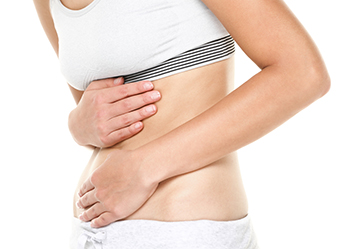
UTIs by David G. Porzio, M.D., FACC
 Questions? We are here for you! 1-877-MY DOC NOW (1-877-693-6266)
Questions? We are here for you! 1-877-MY DOC NOW (1-877-693-6266)
Save time, book your appointment online HERE
One of the most common complaints from women seen in an urgent care setting is dysuria or, as I like to say…”it hurts to make water.” Dysuria or painful urination is a hallmark sign of a lower urinary tract infection or UTI.
Here are some of the other common symptoms:
- Urgency or the feeling you need to use the restroom right away
- Frequency or the need to go seemingly right after you have voided
- Pain in the lower abdomen or pelvis
- Blood in the urine
I am going to educate you regarding urinary tract infections as well as the non-infectious form of cystitis known as “interstitial cystitis”.
The urinary tract can be divided into two broad anatomical sections: lower and upper. The lower urinary tract consists of the urethra (tube from the bladder to the outside world) and the bladder (essentially a bag that holds urine). The upper urinary tract consists of the ureters (tubes that carry urine from, the kidneys to the bladder) and the kidneys, which make the urine itself. Both segments can become infected with bacteria and be called a urinary tract infection although they are not necessarily the same.
 Both lower and upper urinary tract infections involve the urinary tract, but they have marked differences in their clinical severity and treatment. When the lower urinary tract becomes infected, it is typically a more benign illness and is called cystitis. The symptoms are typically dysuria, urgency and frequency. Sometimes there is a dull, non-specific low back or side (flank) pain or visible blood in the urine (tea colored urine). Rarely, the patient will have a fever or other more serious symptoms. When the patient is either older ( > 75) or younger ( < 5) the symptoms may be quite subtle. An upper urinary tract infection, also called acute pyelonephritis or “kidney” infection, can be a much more serious condition. It usually starts with symptoms of a lower UTI, but progresses to involve the upper urinary tract. When this happens, the symptoms include fever (100 F and above), chills, nausea, vomiting, and back tenderness just below the rib cage. Treatment of a lower UTI usually requires just an oral antibiotic for 3-7 days and culture of the urine to identify the causative agent. Acute pyelonephritis is a systemic illness and almost always requires either IM (intra-muscular) or IV (intravenous) antibiotics for several days before switching over to oral antibiotics to finish a treatment course of at least 7 days.
Both lower and upper urinary tract infections involve the urinary tract, but they have marked differences in their clinical severity and treatment. When the lower urinary tract becomes infected, it is typically a more benign illness and is called cystitis. The symptoms are typically dysuria, urgency and frequency. Sometimes there is a dull, non-specific low back or side (flank) pain or visible blood in the urine (tea colored urine). Rarely, the patient will have a fever or other more serious symptoms. When the patient is either older ( > 75) or younger ( < 5) the symptoms may be quite subtle. An upper urinary tract infection, also called acute pyelonephritis or “kidney” infection, can be a much more serious condition. It usually starts with symptoms of a lower UTI, but progresses to involve the upper urinary tract. When this happens, the symptoms include fever (100 F and above), chills, nausea, vomiting, and back tenderness just below the rib cage. Treatment of a lower UTI usually requires just an oral antibiotic for 3-7 days and culture of the urine to identify the causative agent. Acute pyelonephritis is a systemic illness and almost always requires either IM (intra-muscular) or IV (intravenous) antibiotics for several days before switching over to oral antibiotics to finish a treatment course of at least 7 days.
UTIs are one of the most common conditions seen in the urgent care setting and are far more frequent in women than men. UTIs account for approximately 8 million patient visits per year to a health care facility. Women have a 50% chance of developing a UTI in adulthood over their lifetime. Women are more prone to UTIs because the urethra is anatomically shorter than in men and is close to bacteria that can migrate form the anus to the urethra. The diagnosis of a UTI is based on the clinical symptoms described above and the presence of leukocytes (white blood cells that fight infection) in the urine. Microscopic blood (hematuria) or nitrite (bacteria produce it) can also be present in the urine sample. If symptoms and urine sample analysis are consistent with the a UTI diagnosis, then most providers will initiate treatment with an appropriate antibiotic and have the urine sent for culture. This latter step is important to identify the presence of pathogenic bacteria in the urine in a quantity sufficient to cause an infection. The lab will also check the sensitivity of the bacteria to a variety of antibiotics to determine if there is resistance. In this manner, the choice of antibiotic can be changed if the sensitivity shows the bacteria to be resistant to the initial antibiotic. In some cases, the urine culture fails to grow any bacteria at all, which indicates an infection is not the cause of the symptoms.
their lifetime. Women are more prone to UTIs because the urethra is anatomically shorter than in men and is close to bacteria that can migrate form the anus to the urethra. The diagnosis of a UTI is based on the clinical symptoms described above and the presence of leukocytes (white blood cells that fight infection) in the urine. Microscopic blood (hematuria) or nitrite (bacteria produce it) can also be present in the urine sample. If symptoms and urine sample analysis are consistent with the a UTI diagnosis, then most providers will initiate treatment with an appropriate antibiotic and have the urine sent for culture. This latter step is important to identify the presence of pathogenic bacteria in the urine in a quantity sufficient to cause an infection. The lab will also check the sensitivity of the bacteria to a variety of antibiotics to determine if there is resistance. In this manner, the choice of antibiotic can be changed if the sensitivity shows the bacteria to be resistant to the initial antibiotic. In some cases, the urine culture fails to grow any bacteria at all, which indicates an infection is not the cause of the symptoms.
Patients who have chronic symptoms of bladder pain, urgency and frequency but have negative urine cultures may actually have “interstitial cystitis/bladder pain syndrome (IC/BPS). The diagnosis of IC/BPS is made on a clinical basis. There are no specific tests or diagnostic imaging that establish the diagnosis. The simplest diagnostic criteria are from the American Urological Society:
An unpleasant sensation (pain, pressure, discomfort) perceived to be related to the urinary bladder, associated with lower urinary tract symptoms of more than six weeks’ duration, in the absence of infection or other identifiable causes.
Typically, these patients who come repeatedly to the urgent care setting or their PCP with recurring symptoms of cystitis, get started on an antibiotic only to have the urine culture come back with no growth. That is why obtaining a urine culture is so important when evaluating patient with urinary tract complaints. Whenever I encounter a patient with recurrent UTI symptoms and consistently negative urine cultures, then I consider IC/BPC as more likely diagnosis. I educate them regarding the difference between a true, culture positive UTI and IC/BPS and provide a referral to a urogynecologist, who are the best specialist to see to establish the diagnosis, eliminate other possible causes like a genital tract cancer, bladder stone or pelvic mass and to provide treatment recommendations.
Dysuria, urgency and frequency are common symptoms of “cystitis”. The most common reason people and especially females develop these symptoms is a urinary tract infection. If these symptomatic patients have the presence of leukocytes, nitrites or hematuria in the urine, then they are usually placed on an appropriate antibiotic and the urine sample cultured. If the patient continues to have recurrent symptoms of a UTI without a positive urine culture, then the diagnosis of interstitial cystitis/bladder pain syndrome should be considered and the patient referred to either a gynecologist or urogynecologist for an appropriate diagnostic evaluation and development of a comprehensive treatment plan.
Questions? We are here for you! 1-877-MY DOC NOW (1-877-693-6266)
Save time, book your appointment online HERE
The information provided is for general interest only and should not be misconstrued as a diagnosis, prognosis or treatment recommendation. This information does not in any way constitute the practice of medicine, or any other health care profession. Readers are directed to consult their health care provider regarding their specific health situation. Marque Medical is not liable for any action taken by a reader based upon this information.
